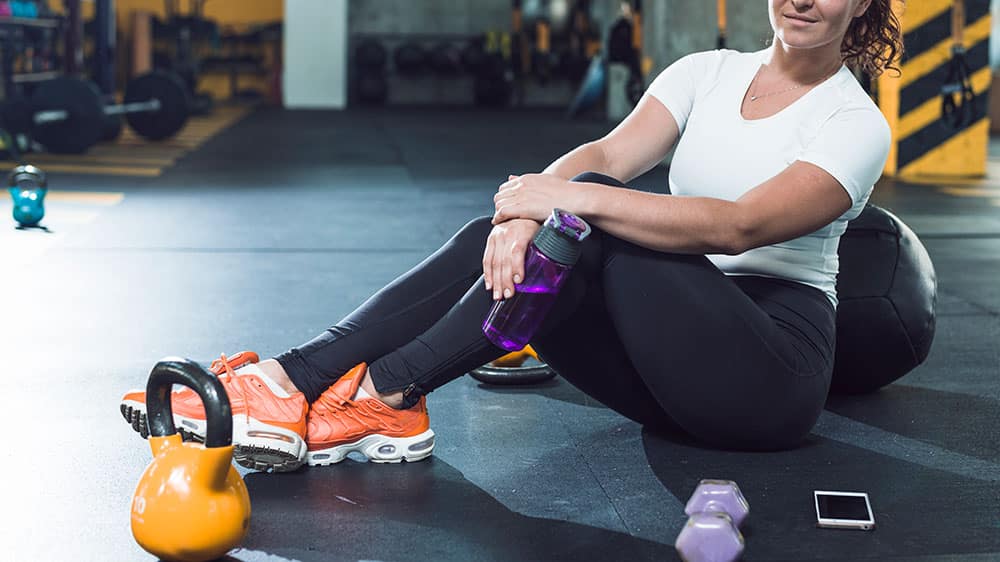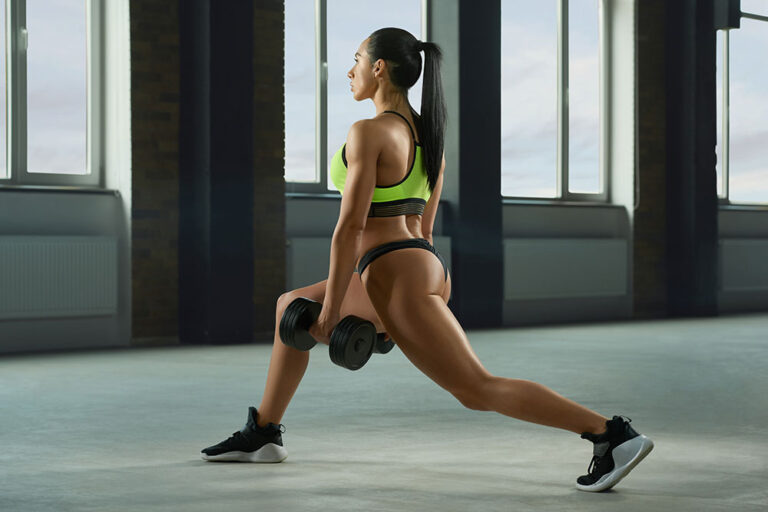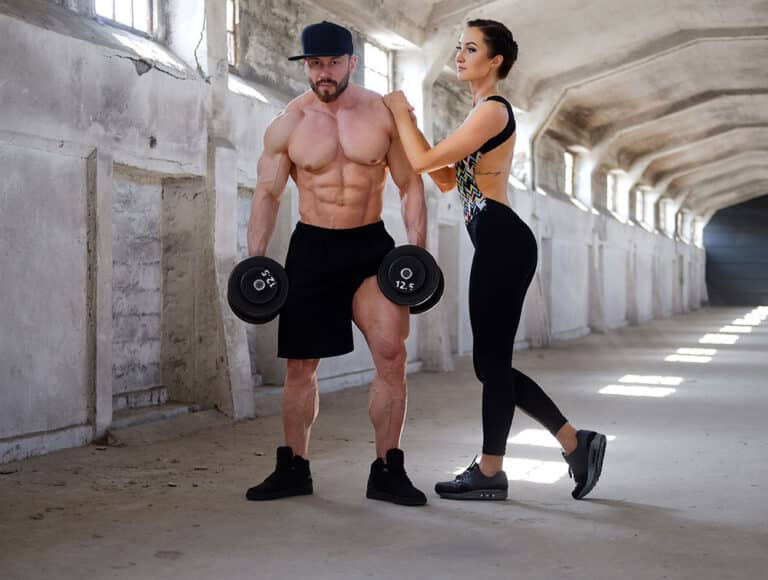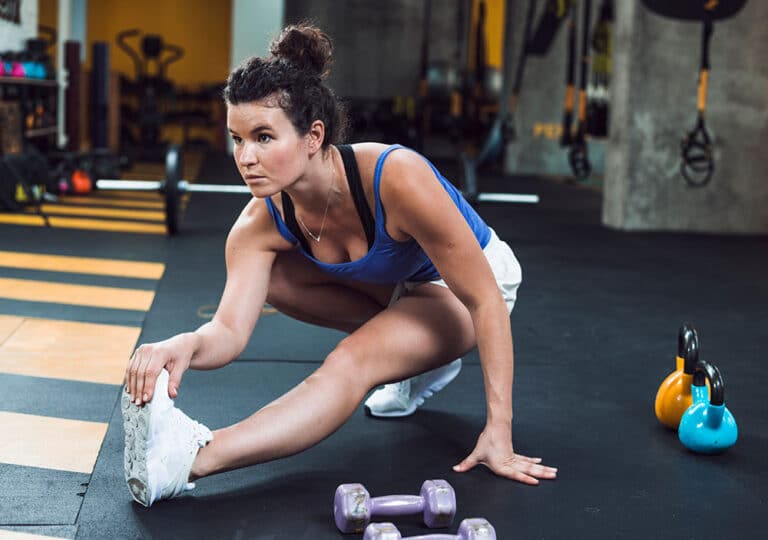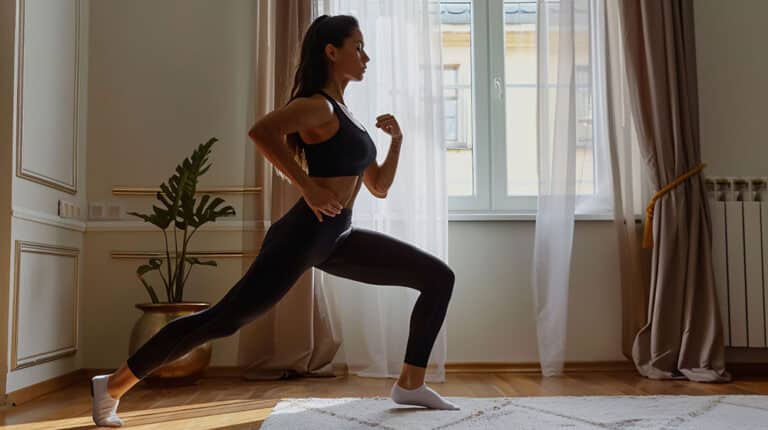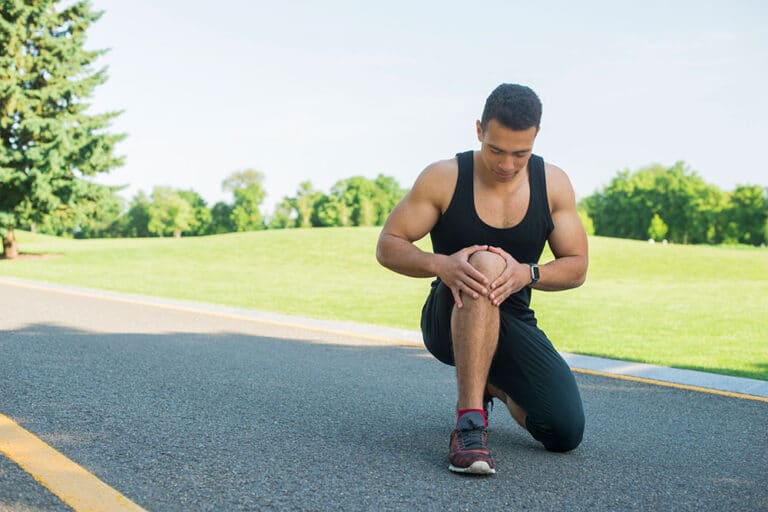Bodyweight Leg Exercises
When targeting leg strength and stamina using bodyweight workouts, primary movements and additional variations are essential for a comprehensive routine.
Primary Movements
The foundation of any effective leg workout comprises squat and lunge movements. These exercises are highly efficient for developing leg strength and improving overall mobility (Healthline).
Squats
- Bodyweight Squats: Excellent for beginners, focusing on proper form and muscle activation.
- Chair Squats: Ideal for those who need a bit of support.
- Jump Squats: An advanced variation that adds a plyometric element for explosive strength.
Lunges
- Forward Lunges: Effective for targeting quads and glutes.
- Reverse Lunges: Puts less strain on the knees, making them suitable for individuals with knee issues.
- Walking Lunges: Adds a balance challenge, involving the core and enhancing stability.
Learn how to do bodyweight squats using proper technique to avoid injury and maximize benefits.
Additional Exercise Variations
Incorporating variations of primary movements and other exercises can add variety and target different muscle groups. This section explores some excellent additions.
A-Skip
- This exercise combines a skipping motion with high knees. It’s great for warming up and improving coordination.
| Exercise | Benefit |
|---|---|
| A-Skip | Improves hip mobility and cardiovascular endurance |
Discover more about bodyweight leg challenge exercises.
Side Lunge
- Effective for targeting the inner and outer thighs, providing a balance challenge.
| Exercise | Muscle Targeted |
|---|---|
| Side Lunge | Inner and Outer Thighs |
Explore various bodyweight lunge variations to diversify your workout routine.
Hip Thrust
- A 2019 study published in The Journal of Strength and Conditioning Research found hip thrusts to be extremely effective for glute strengthening (Outside Online).
Progressions
- Glute Bridge: Suitable for beginners.
- Single-Leg Hip Thrust: Adds intensity by working each leg individually.
Step-Up
- Step-ups were identified in a 2020 study as one of the best exercises for lower-body strength (Outside Online).
| Exercise | Benefit |
|---|---|
| Step-Up | Enhances overall leg strength |
Check out how to build leg muscle without weights for additional tips and exercises.
Incorporating these primary and additional diversified movements can help anyone achieve a well-rounded leg workout, ensuring strength, stamina, and better overall leg health. For more ideas, read about tips for quick leg workouts with no equipment.
Squat Variations
Squats are fundamental leg exercises that target the entire lower body, including glutes, quadriceps, hamstrings, and calves. They are essential for building strength, enhancing stamina, and improving overall leg health. Here, we’ll explore two effective squat variations: Chair Squats and Jump Squats.
Chair Squats
Chair Squats are an excellent starting point for beginners, providing a safe and controlled way to master the squat movement. This exercise helps in building leg strength and improving balance without requiring any equipment.
To perform Chair Squats:
- Stand in front of a chair with feet shoulder-width apart.
- Extend your arms forward for balance.
- Lower your body by bending at the hips and knees, as if sitting back into the chair.
- Lightly touch the chair with your glutes, ensuring not to fully sit down.
- Push through your heels to return to the starting position.
Performing Chair Squats with proper form can significantly reduce stress on the knees and lower back, making it suitable for individuals with joint concerns. For further guidance on executing this movement, check out our detailed guide on how to do bodyweight squats.
Jump Squats
Jump Squats add a plyometric element to the traditional squat, making it a high-intensity exercise that increases power, explosiveness, and cardiovascular endurance. This variation is ideal for those looking to take their leg workout to the next level.
To perform Jump Squats:
- Stand with feet shoulder-width apart and arms at your sides.
- Lower into a squat position, keeping your chest up and back straight.
- Explosively jump upwards by pushing through your heels, extending your legs fully.
- Land softly back into the squat position with knees bent to absorb the impact.
- Repeat the movement continuously for the desired number of reps.
| Exercise | Difficulty Level | Benefits |
|---|---|---|
| Chair Squats | Beginner | Improves balance, reduces joint stress |
| Jump Squats | Advanced | Increases power, enhances cardiovascular fitness |
Jump Squats are particularly effective for athletes and those aiming to improve their leg strength and athletic performance. To prevent injury, always land softly and return to the squat position with control. Discover more plyometric exercises for enhanced leg power in our article on plyometric exercises for legs.
Both Chair Squats and Jump Squats have their unique benefits and contribute significantly to leg strengthening for runners, fitness enthusiasts, and anyone looking to improve lower body strength. Experiment with these variations and integrate them into your leg workout routine to achieve the best results.
Lunge Variations
Lunges are a fundamental exercise for anyone looking to strengthen and tone their legs. They provide an excellent way to target multiple muscle groups while also improving balance and stability. Let’s dive into the muscle targeting and stability and strength benefits of lunge variations.
Muscle Targeting
Lunges are highly effective at targeting a variety of muscle groups. They primarily work the quadriceps, hamstrings, glutes, and calves. Here’s a closer look at the muscles activated during lunges:
| Muscle Group | Primary Activation |
|---|---|
| Quadriceps | High |
| Hamstrings | Moderate |
| Glutes | High |
| Calves | Moderate |
| Core | Moderate |
Lunges engage more muscle fibers than squats due to the need for stabilization, making them a great addition to any [quick leg workout no equipment] routine. For those new to lunges, several variations can be scaled to match different fitness levels.
Stability and Strength Benefits
Performing lunges not only builds muscle but also improves balance and stability. Because lunges are a unilateral exercise, they involve high stabilization requirements, engaging the core and glute muscles to a greater extent:
-
Improved Balance: Unilateral exercises like lunges require balance. This engages many stabilizing muscles in the hips and core that are often overlooked in bilateral exercises like squats.
-
Enhanced Stability: The act of lunging strengthens the stabilizing muscles around the knees and ankles, which can help improve overall joint stability.
-
Core Activation: Holding the lunge position activates the core muscles, providing an additional workout to this area, which is essential for maintaining good posture and avoiding injuries.
For more tips on incorporating lunges into your workout, visit our bodyweight lunge variations article.
Interestingly, exercises such as lunges and step-ups have been identified as some of the best lower body strengthening exercises. Incorporating these into your routine can significantly enhance leg strength.
In summary, lunges offer a versatile and effective way to target key leg muscles while also improving stability and balance. Explore different lunge variations and integrate them into your leg strength training for optimal results. For more leg exercises, check out our articles on how to do bodyweight squats and leg strengthening for runners.
Additional Leg Exercises
In addition to traditional exercises like squats and lunges, incorporating various leg exercises can enhance strength, stamina, and health. Two highly effective exercises in a [quick leg workout no equipment] setup are the A-skip and side lunge.
A-Skip
The A-skip is a dynamic exercise that combines aerobic movement with targeted muscle engagement. Often used in warmups, this exercise improves hip mobility and overall leg strength. It actively engages the glutes, hamstrings, and calves, making it an excellent addition to any leg workout.
How to Perform the A-Skip:
- Stand upright with your feet shoulder-width apart.
- Lift your right knee to waist height while hopping on your left foot.
- Simultaneously, drive your left arm forward (opposite arm to knee) to mimic a running motion.
- Alternate quickly between legs in a skipping motion while maintaining an upright posture.
Table: Reps and Sets for Beginners
| Exercise | Reps | Sets |
|---|---|---|
| A-Skip | 20-30 (per leg) | 2-3 |
For additional variety in your leg workouts, explore adding the A-skip to your morning leg exercises routine.
Side Lunge
The side lunge is another excellent movement that targets the inner and outer thighs, glutes, and hips. This exercise helps improve balance, flexibility, and strength in the lower body, making it particularly beneficial for individuals with an active lifestyle.
How to Perform the Side Lunge:
- Stand tall with your feet hip-width apart.
- Take a large step to the right, bending your right knee while keeping your left leg straight.
- Push your hips back and lower your body until your right thigh is parallel to the ground.
- Push through your right foot to return to the starting position.
- Repeat on the other side.
Table: Reps and Sets for Beginners
| Exercise | Reps | Sets |
|---|---|---|
| Side Lunge | 10-12 (per side) | 2-3 |
Side lunges can be incorporated into various leg strengthening routines, including leg exercises while traveling, due to their simplicity and requirement of no equipment.
These exercises are highly beneficial for improving overall leg strength and mobility. For more detailed guides and added benefits to your regimen, delve into our sections on bodyweight leg challenge and calf exercises without weights.
Leg Strength Building Techniques
Building leg strength is essential for overall fitness, especially for those looking to improve their stamina and performance. Effective techniques include integrating various walking and running variations, along with cross-training exercises.
Walking and Running Variations
Walking and running are excellent methods to enhance leg strength. However, performing the same routine repeatedly can lead to muscle adaptation and a subsequent performance plateau. To avoid this, incorporating different variations can significantly impact leg strength and intensity. For example, running on hills or inclines challenges the muscles in different ways, promoting increased strength and endurance. You can further explore leg strengthening for runners for more insights.
| Walking/Running Variation | Benefit |
|---|---|
| Hill Running | Enhances strength and intensity |
| Interval Training | Improves speed and endurance |
| Long Distance Runs | Builds stamina and cardiovascular health |
Additional running variations include interval training, where bursts of high-speed running are alternated with slower recovery walks or runs. This enhances both speed and endurance, making it an effective approach to prevent muscle complacency.
Cross-Training Benefits
Cross-training involves combining different types of exercises to improve overall fitness and leg strength. By incorporating activities like strength training, swimming, elliptical training, cycling, and sports such as soccer or basketball, one can achieve balanced muscle development and prevent overuse injuries. Duke Wellness notes the significant impact cross-training can have on leg power (Duke Wellness).
Here are some cross-training options and their respective benefits:
| Cross-Training Type | Benefit |
|---|---|
| Strength Training | Enhances muscle power and endurance |
| Swimming | Low-impact cardio that strengthens legs |
| Cycling | Improves leg muscles without joint strain |
| Elliptical Training | Provides cardio workout with minimal impact |
Introducing cross-training into your routine not only builds leg strength but also contributes to overall fitness levels. These varied exercises ensure that different muscle groups are targeted, thus enhancing leg power and preventing the monotony of a repetitive workout routine.
By incorporating walking and running variations along with cross-training benefits, you can effectively boost your leg strength, making your workouts more efficient and impactful. For more tips on working out without equipment, check out quick leg workout no equipment.
For more comprehensive leg strength training routines and tips, explore resources like [morning leg exercises], [wall exercises for legs], and [leg workout frequency bodyweight].
Leg Day Warm-Up
Importance of Warm-Up
A proper warm-up is crucial before diving into any leg day workout. Skipping this step could increase the risk of injury and shortchange your workout gains. A quick leg warm-up increases blood flow to the muscles, enhances soft tissue extensibility, and improves the quality of muscle contractions, making both muscles and joints less prone to injury (Beachbody on Demand).
A thorough 10 to 15-minute warm-up at the beginning of a workout prepares the joints, muscles, and brain for the exercises ahead (Beachbody on Demand). This preparation ensures that the body is ready for a vigorous workout and significantly reduces the risk of injury.
Beneficial Exercises
The following exercises are excellent for warming up leg muscles, gradually increasing blood flow, elevating heart rate, and improving joint flexibility. These exercises target every muscle group in the legs, including hamstrings, hip flexors, abductors, adductors, quads, and glutes (TRX Training):
-
Brisk Walk or Jog: Start with a 10-minute walk or jog to get the blood pumping and warm up the body’s tissues. This is especially important if you’ve been sedentary or have just woken up.
-
Leg Swings: Perform leg swings to activate the hip flexors and hamstrings. Swing one leg forward and backward or side to side for 10 repetitions, and then switch legs.
-
Bodyweight Squats: Perform bodyweight squats to activate the quads, glutes, and hamstrings. Aim for 15 to 20 repetitions.
-
Lunges: Incorporate forward or reverse lunges to engage the quads, glutes, and hamstrings. Perform 10 lunges per leg.
-
Hip Circles: Rotate your hips in large circles to loosen up the hip joints. Perform 10 circles in each direction.
-
Calf Raises: Execute calf raises to warm up the calves. Perform 15 to 20 repetitions.
Here’s a quick table summarizing the warm-up exercises and their primary targets:
| Exercise | Primary Target Areas |
|---|---|
| Brisk Walk/Jog | Overall leg muscles, cardiovascular system |
| Leg Swings | Hip flexors, hamstrings |
| Bodyweight Squats | Quads, glutes, hamstrings |
| Lunges | Quads, glutes, hamstrings |
| Hip Circles | Hip joints |
| Calf Raises | Calves |
Including these warm-up exercises in your routine can set a solid foundation for a productive leg workout and enhance power and endurance. For those with specific needs, check out leg exercises for bad knees or leg strengthening for runners for tailored recommendations.
Power and Plyometric Training
Plyometric training involves quick, powerful movements that are beneficial for athletes and fitness enthusiasts alike. These exercises, designed around a system of reactive movements, include both an eccentric contraction followed immediately by an explosive concentric contraction.
Plyometric Exercises Overview
Plyometric exercises are designed to improve power output by combining strength and speed. The following exercises are popular in plyometric training:
- Jump Squats: A fundamental move that combines a squat with a vertical jump. This helps to improve overall leg power.
- Box Jumps: Involves jumping onto and off a box, focusing on explosive leg power and coordination.
- Burpees: A full-body exercise that enhances endurance and explosive strength.
- Tuck Jumps: Involves jumping straight up and tucking the knees towards the chest mid-air, improving agility and leg strength.
For the best results, incorporate these exercises into your [quick leg workout no equipment] routine. For more detailed guides on specific leg exercises, visit our sections on how to do bodyweight squats and bodyweight lunge variations.
Benefits of Plyometric Training
Plyometric training offers multiple benefits that enhance athletic performance and general fitness. Here are some key benefits:
| Benefit | Description |
|---|---|
| Improved Power Output | Plyometrics help increase the power and speed of muscle contractions (NASM). |
| Enhanced Reactive Strength | These exercises improve the ability to generate force quickly, beneficial for sports requiring rapid movements (NASM). |
| Better Dynamic Stability | Plyometrics improve dynamic knee stability and overall balance, useful for reducing the risk of injuries (NASM). |
| Flexibility in Force Transfer | This training optimizes how force moves through joints, minimizing energy leaks and improving performance (NASM). |
| Injury Prevention | These exercises can reduce the likelihood of ankle sprains and ACL injuries by enhancing neuromuscular control and force dispersal (Journal of Physiotherapy, PubMed Central). |
Incorporating plyometric exercises into your routine not only boosts your leg strength but also provides a full-body workout that enhances agility and explosive power. For more information on leg workouts and additional exercise variations, check out our sections on leg exercises while traveling or morning leg exercises.
By focusing on power and plyometric training, you can achieve significant improvements in strength, stability, and overall fitness. For other leg strengthening techniques and variations, explore our guides on leg strengthening for runners and calf exercises without weights.
- About the Author
- Latest Posts
Johnnie D. Jackow Sr., the founder and CEO of Total Body Fitness, Worldwide, has a long-standing career in the fitness industry. He began as a certified personal trainer in the mid-90s and soon after authored his first weight loss book in 1998. This led to the launch of Total Body Fitness, Nationwide in the USA at the same time. Johnnie gained recognition as the fitness guru of his time, running infomercials on local TV late at night in Houston, Texas. Over the years, he has helped more than 40,000 individuals from all over the world achieve their health and fitness goals. With over 60,000 hours of documented training in integrative functional medicine, he completed his PhD in human physiology in 2010. His primary objective is to assist people in reaching their health and fitness goals through alternative approaches rather than relying solely on conventional medicine and pharmaceutical drugs. Today, with almost three decades of experience under his belt, Johnnie continues to be a leader in health and fitness.

